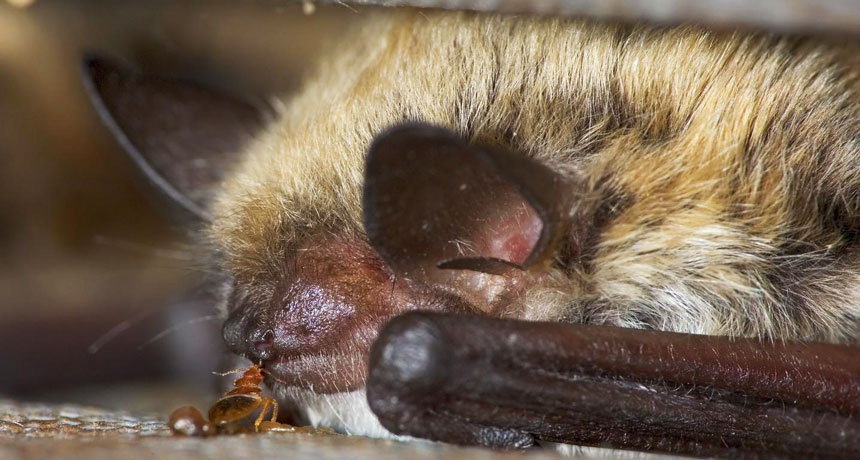Bloodthirsty bedbugs have feasted on prey for 100 million years
New genetic analyses reveal the insects evolved from at least the Cretaceous

PICKY EATERS Genetic analysis has revealed that ancestral bedbugs, like their modern relatives, probably preyed upon birds and small mammals, like this bat. In this image, a bedbug comes face-to-face with its prey.
Mark Chappell/UC Riverside






